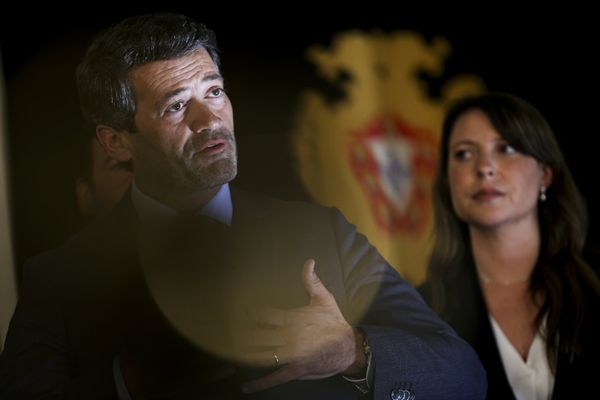
There can be few more satisfying ways of arriving at a hotel than on a tiny steam train, huffing and puffing up the side of a sumptuous Welsh valley. A couple of hours beforehand we’d pulled into Aberystwyth on a more conventional train in time for a quick lunch before our date with the past: the Vale of Rheidol narrow-gauge railway, which takes us 12 miles inland and climbs 200 metres to Devil’s Bridge, a village dominated by the Hafod Hotel.
Constructed in 1787 as a hunting lodge for the Hafod estate, the building was enlarged around 50 years later by the Duke of Newcastle. After the grand country house it served burned down, the lodge became a hotel, whose visitors included David Lloyd George. It rather rested on its laurels after that, until last summer, when it was bought by Nicol and Dewi Gwynne, who hope to replicate the success they’ve had with their other hotel, the Cross Foxes Inn near Dolgellau, Snowdonia.

“Probably nothing was done on the hotel for 30 years,” says Nicol, showing us one of the old rooms (four have been refurbished so far; the plan is to have all 15 finished by the winter). “Tired” is a word often used of hotel rooms: “exhausted” would be a better description of this one. The renovated bedrooms have been transformed beyond recognition. Mine, the Duke of Newcastle, is light and bright, with contemporary furnishings, shutters on sash windows, black-and-white photos of local landscapes and an en suite wetroom with rain shower. There’s an exposed stone wall and a view of miles of greenery all the way to the Plynlimon peaks, source of the Severn, Wye and Rheidol rivers.

We step outside to see the Mynach Falls, which crash through dense woodland in the shadow of the hotel. It’s a delightful spot, celebrated by William Wordsworth, who wondered, in his sonnet To the Torrent at the Devil’s Bridge, “Can such force/Of waters issue from a British source … ?” Well might he ask. The humidity, the low wisps of cloud among the magnificently tall trees, and the huge rhododendrons reminded me of Las Pozas, Edward James’ surrealist sculpture garden in the Mexican jungle.
The three bridges that span the Mynach ravine, each constructed on top of the other, do look much more British though. The lowest one is purported to have been built by the devil but on balance it seems more likely to have been the work of monks from the Strata Florida monastery in Norman times.

Dinner is in the Hafod’s fully refurbished high-ceilinged bar, with high-backed wooden chairs and a metal sign from a previous age claiming that Handel was inspired to write the Hallelujah Chorus while on the Hafod Estate. The bar is abuzz with local diners: though it must be said that we aren’t blown away by the food. To be fair, a message that I’m vegan hasn’t got through, so although a meze starter is good, my main of stuffed aubergines, skewered vegetables and grilled corn-on-the-cob is bland and my companion’s locally caught trout is disappointingly dry. Perhaps we are just unlucky: the bar has a good reputation for pub staples such as Welsh lamb pie and homemade chilli, and the kitchen redeems itself the next morning with a breakfast that includes laverbread, the Welsh seaweed-and-oat confection which is, to my mind, cruelly underrated.
Duly fortified, we take a walk around the Hafod Estate before heading a few miles north to the innovative Silver Mountain Experience. This is a former lead mine where, among other diversions, visitors can pan for fool’s gold (not, apparently, a puckish satire on modern existence). This just leaves us time to mosey around Welsh chocolatier Sarah Bunton’s shop by Devil’s Bridge station before the 4.15pm train steams out, taking us back down the valley in an open-sided carriage to a less wondrous and rather more ordinary world.
• Accommodation was provided by the Hafod Hotel (doubles from £125 B&B, 01970 890232, thehafod.co.uk). Travel from Birmingham to Aberystwyth was provided by Arriva Trains Wales, from £35 return. Returns from Aberystwyth to Devil’s Bridge on the Vale of Rheidol Railway cost £21 adult, £9 child
Ask a local
Will Davey, electrician who grew up (without electricity) on the Hafod Estate

• Pub
In Llanfihangel y Creuddyn, a village about seven miles away, Y Ffarmers is a welcoming pub with nice ales and excellent food.
• Cycling
Mountain biking is very popular in the area. Bwlch Nant yr Arian, less than six miles away, has tracks for all ages and abilities and a new bike skills park.
• Walk
The 500-acre Hafod Estate is overseen by the Forestry Commission and the Hafod Trust. Pathways and footbridges built by Thomas Johnes in the 18th century have been restored and trails include the Lady’s Walk, which starts and finishes at Hafod Church. It follows the river into the heart of the park and through the walled garden created by Johnes’ daughter.







